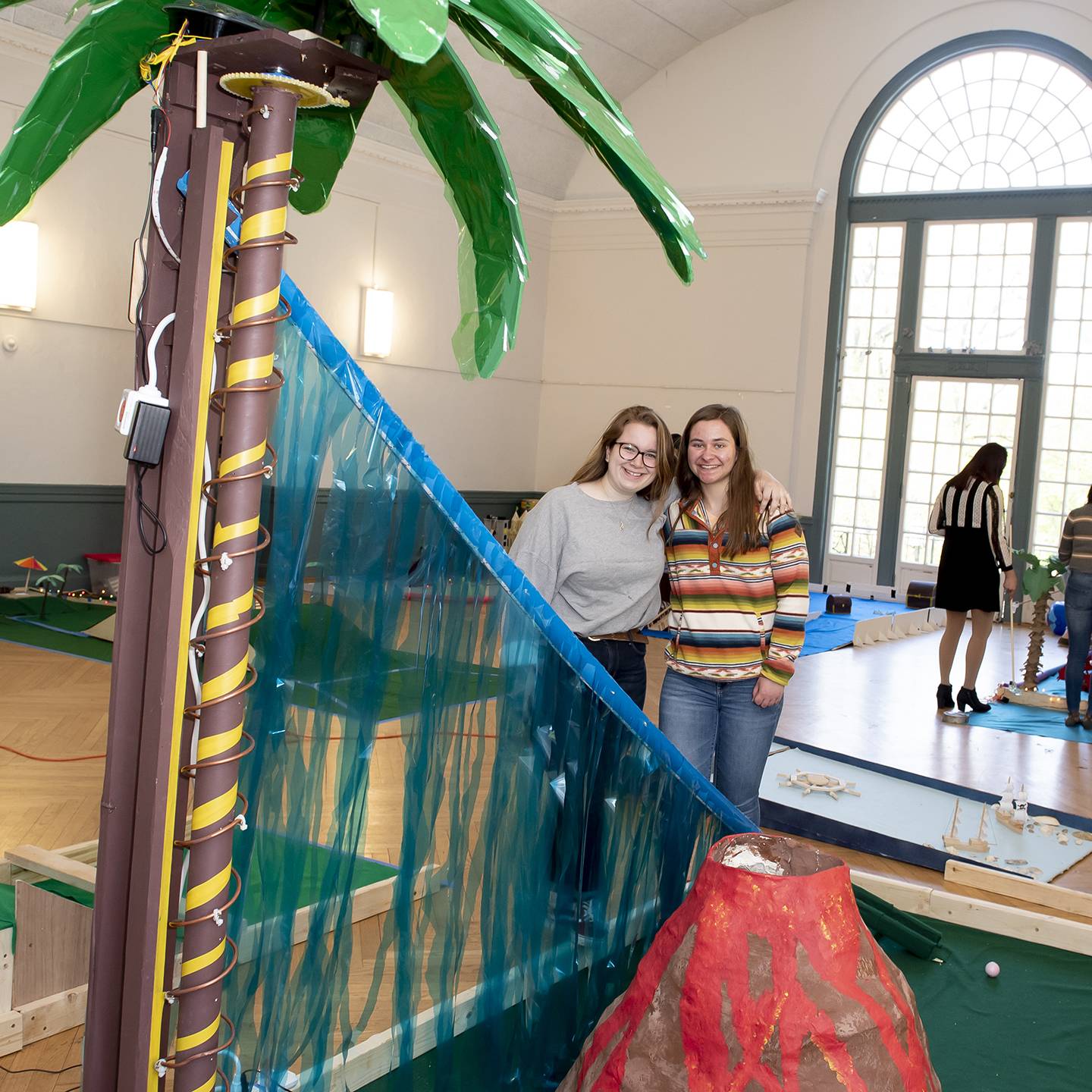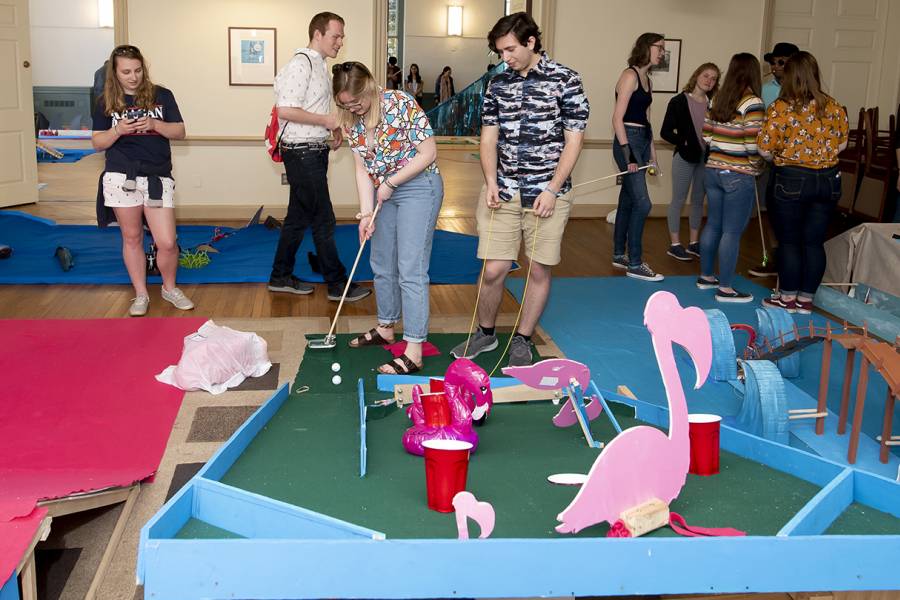It was pure and putter madness in Levering Hall on Saturday.
First-year mechanical engineering students, in the culminating project of their spring semester, constructed a 17-hole, high-tech miniature golf course designed to dazzle and delight visitors of JHU's annual Spring Fair.
"You have to hit the ball harder than you think," student Joe Somerville advised one player, who wasn't having much luck on the hole Somerville built with teammates Matthew Jacobs, Maya Sitaram, and Hubert Leo.
After a few attempts, the player launched the ball up a short ramp and into a PVC pipe track that carried the ball to the hole. When the ball dropped in, the hole lit up with flashing red and blue lights, signaling the player's success.

Image credit: Larry Canner / Homewood Photography
"Our first design for this was far too intricate, so we had to change design plans about halfway through the project," said Somerville. "What that taught me is that you need a straightforward, but powerful, idea from the get-go."
The project was the final assignment of the MechE Freshman Lab II course, which teaches first-year students how to design with basic electronics, microcontrollers, sensors, and motors. Working in small teams, this year's cohort was challenged to design and fabricate miniature golf holes with mechanical obstacles. They were given only a few design specifications: The hole must have moving parts, sensors, lights, and—most importantly—must be fun for players of all ages.
"This was by far the biggest and most public design project I've assigned" said Steven Marra, an associate teaching professor in the Department of Mechanical Engineering and the course instructor. "The students really had to consider their designs from the users' perspective. Considering some of the project constraints, I'm amazed at how well they pulled it off."

Image credit: Larry Canner / Homewood Photography
When designing their holes, students stuck with this year's Spring Fair theme, "Lost in Paradise." The course was full of brightly lit palm trees, moving flamingos and sharks, and even included a sailing ship that shot the golf ball out of a cannon.
Eleanor O'Callaghan, Sophie Dunn, Rodrigo Madero Murillo, and Maximilian Garcia designed a challenging hole featuring an Archimedes' screw palm tree and a papier-mâché volcano that blew out bubbles when a ball passed through.
"I was so impressed by all the projects. It was fun to see all the mechanisms the students created, and I loved the element of surprise in some of the holes—like the bubbles bursting from the volcano," said Spring Fair visitor Melody Leung, a junior studying harp and music education at Peabody Conservatory.

Image credit: Larry Canner / Homewood Photography
"The biggest challenge was designing a hole that is reactive to the ball," said O'Callaghan. "Nobody in our group had ever worked with sensors or electronics, so we had a big learning curve."
They encountered other practical challenges, as well. "We also didn't factor in how the paint we used on the palm tree might affect the motors and ball movement," said Dunn. Luckily, the team fixed that problem with a time-honored construction standby: duct tape.
A steady stream of Spring Fair visitors tried their hand at the course, and a few players even walked away with that coveted hole-in-one.
"This project was fun because I got to build an integrated system that does something real, something that people can actually use and enjoy," said O'Callaghan. "Now I have the experience of creating something from scratch."
Posted in Science+Technology, Student Life
Tagged mechanical engineering, spring fair, design









